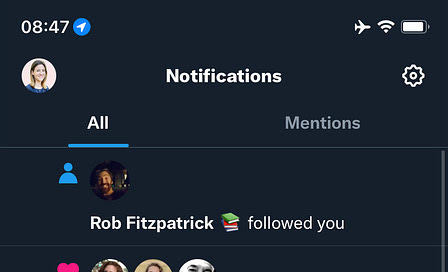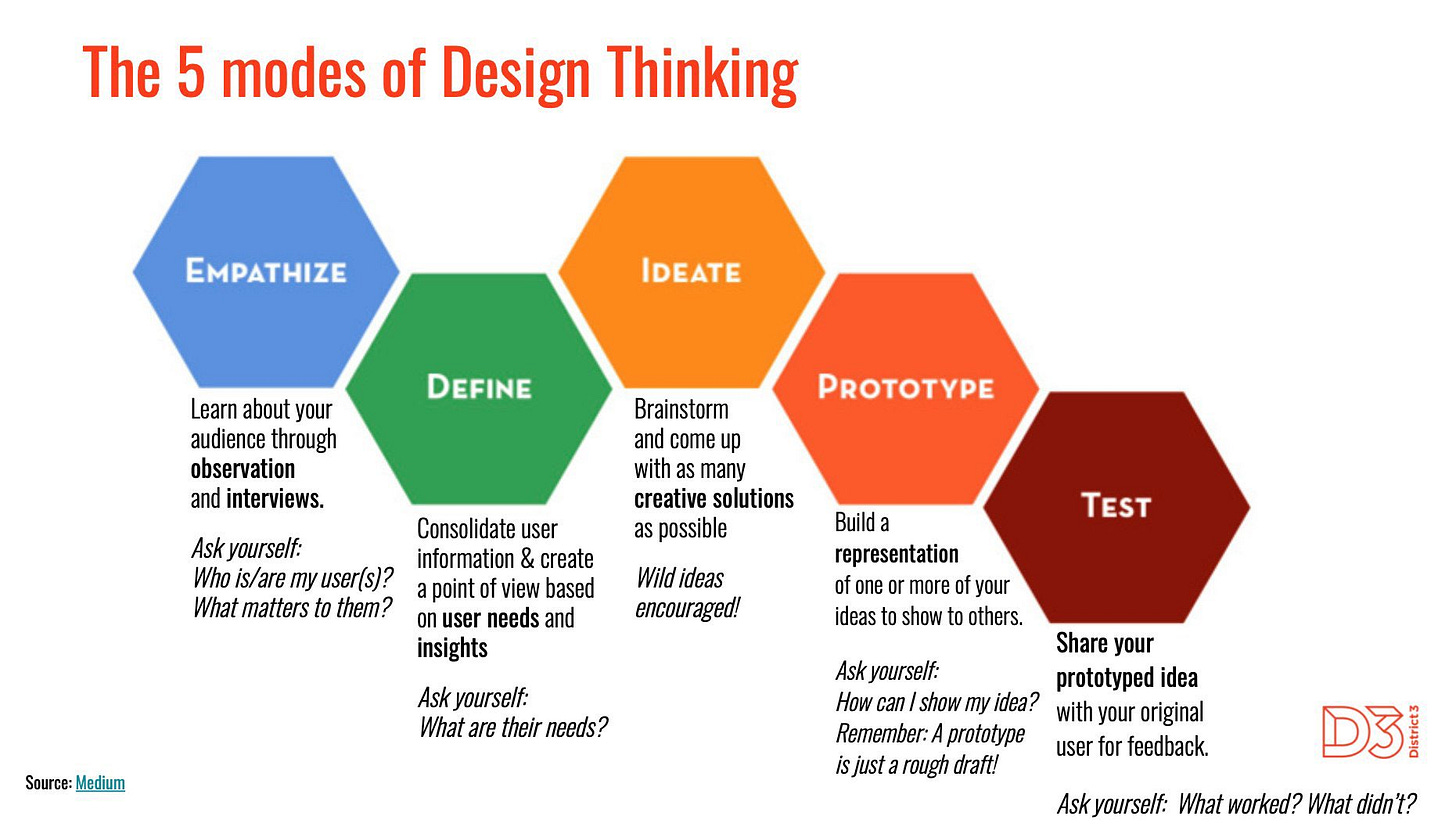Three Valuable Resources to Structure Business Models & Ideas
My intel from working at a startup hub
Hey, it’s Alexandra. Welcome to my weekly newsletter where I share my latest reflections on professional development and well-being.
If you’re not a subscriber, here’s what you missed recently:
Subscribe to get future posts emailed to you:
This week, I’m sharing three resources used by startup entrepreneurs to structure business models and ideas:
The Business Model Canvas
A book called ‘The Mom Test’
A Design Thinking framework
☕️ Read time: 5 mins (best with tea or coffee)
Last week, my friend Derek texted me for advice. He said he was starting a business and he and his co-founders were looking for structure to put their idea to “paper.”
Derek remembered I’d worked at a startup hub from 2020 to 2021, so he asked if I could recommend resources.
I’d learned a ton from the startup coaches, but there were three instances in particular when I thought:
“Wow, I can’t believe I’m just learning this” and “Everyone would benefit from this.”
Those three instances map to three specific resources. I shared them with Derek and now I’ll share them with you.
Three Resources
1. The Business Model Canvas
Steve Blank, the “father of modern entrepreneurship” breaks down what a startup is and how the Business Model Canvas aids in the search for a repeatable and scalable business model in this excellent 13-minute video:
I highly recommend watching it to gain a mental model of how startups work. As a bonus, try reverse-engineering a startup you’re familiar with to understand how it can be broken down into the nine components of the Business Model Canvas.
2. A Book Called ‘The Mom Test’
‘The Mom Test: How to talk to customers and learn if your business is a good idea when everyone is lying to you,’ is a short book that teaches you how to ask questions skillfully enough that even your mom couldn’t lie to you (to spare your feelings).
The first chapter alone will feel like someone taking you by the shoulders and shaking you back to reality (when you realize you’ve been going about customer discovery all wrong).
You’ll realize you’ve been biasing people to tell you what you want to hear and how detrimental that is to the viability of your product or company.
Key takeaways from the book—such as talk less, observe more, and avoid leading users—will fundamentally change how you approach interviewing customers so you can build products they’ll actually pay for.
P.S. Fun fact: The author, Rob Fitzpatrick, followed me on Twitter back in 2022, and later reached out about a potential project. I didn’t have the bandwidth at the time, but I did excitedly tell my former colleagues about it. ‘The Mom Test’ had biblical standing at the startup hub so it was a “Wow, Twitter is powerful” moment for me.

3. A Design Thinking Framework
Most people are good at jumping to solutions while far fewer are good at problem definition. But the latter is the root of everything. So to build a valuable product or company, do yourself a favour and learn how to apply Design Thinking.
This graphic from the startup hub sums the framework up nicely:
But bear in mind the Design Thinking process isn’t necessarily linear. You can circle back to previous “modes” as many times as necessary to achieve your desired outcome.
So there you have it, my top three resources from my time at the startup hub. As far as structuring business models and ideas go, I hope they help you and Derek as much as they’ve helped me.
Also, I’d love to know, what are your go-to resources? Go ahead and share them in the comments.
Thanks for reading and have a wonder-full week,
💛 Like or comment if you enjoyed this edition.
☕️ Reach out to grab coffee or tea in Montreal.


